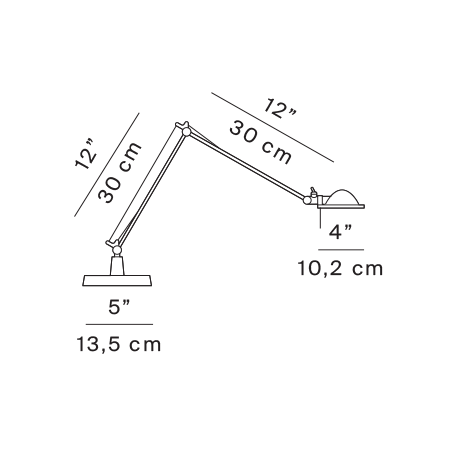BereniceTavolo
designed by Alberto Meda, Paolo Rizzatto
Un punto luce che si orienta nello spazio con agilità e maneggevolezza, proiettando il suo fascioluminoso nella direzione desiderata, in virtù del fluido movimento dei bracci articolati e della possibilità di ruotare a 360 gradi la testa dell’apparecchio.
Ancorata ad una base solida e stabile, la lampada Berenice si esprime con versatilità e precisione in ogni ambiente, esercitando nella sua varietà di tipologie un’essenziale funzionalità.
D12N
Berenice bracci 45+45cm

D12N
Berenice bracci 45+45cm
Specifiche principali
| Typology | Tavolo | ||||
|---|---|---|---|---|---|
| Application | Interno | ||||
| Material |
|
||||
| Finishes |
|
||||
| Dimensions (mm) | H 450 arm base, L 450 arm head, D head Ø 102, base Ø 150 | ||||
| Weight (kg) | 3.2 | ||||
| Light Source | LED 2W G4 3000K (supplied); HSGST max 10W G4/GY 6.35 12V; max 12.6 x 36 mm , 3000K, CRI 80 | ||||
| Insulation Class | III |
D12NPI
Berenice bracci 30+30cm

D12NPI
Berenice bracci 30+30cm
Specifiche principali
| Typology | Tavolo | ||||
|---|---|---|---|---|---|
| Application | Interno | ||||
| Material |
|
||||
| Finishes |
|
||||
| Dimensions (mm) | H 300 arm base, L 300 arm head, D head Ø 102, base Ø 135 | ||||
| Weight (kg) | 2.3 | ||||
| Light Source | LED 2W G4 3000K (supplied); HSGST max 10W G4/GY 6.35 12V; max 12.6 x 36 mm , 3000K, CRI 80 | ||||
| Insulation Class | III |
D12NPT
Berenice bracci 45+45cm – perno fisso

D12NPT
Berenice bracci 45+45cm – perno fisso
Specifiche principali
| Typology | Tavolo | ||||
|---|---|---|---|---|---|
| Application | Interno | ||||
| Material |
|
||||
| Finishes |
|
||||
| Dimensions (mm) | H 450 arm base, L 450 arm head, D head Ø 102, pivot Ø27, h 60 | ||||
| Weight (kg) | 0.6 | ||||
| Light Source | LED 2W G4 3000K (supplied); HSGST max 10W G4/GY 6.35 12V; max 12.6 x 36 mm , 3000K, CRI 80 | ||||
| Insulation Class | III |









